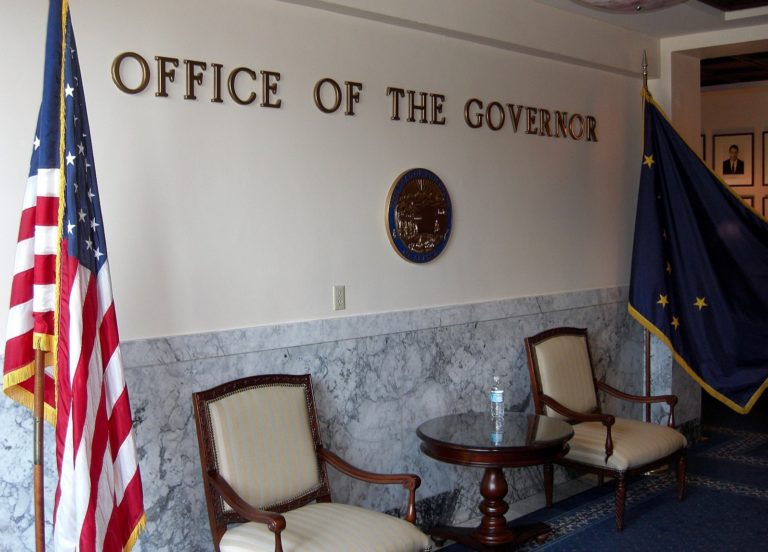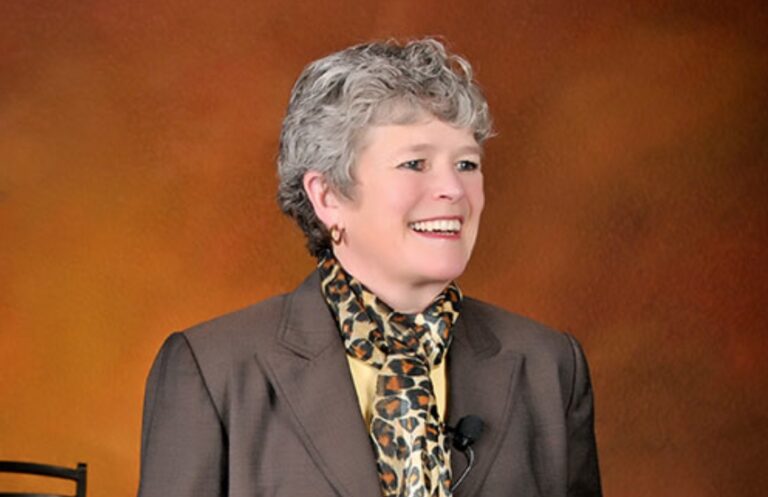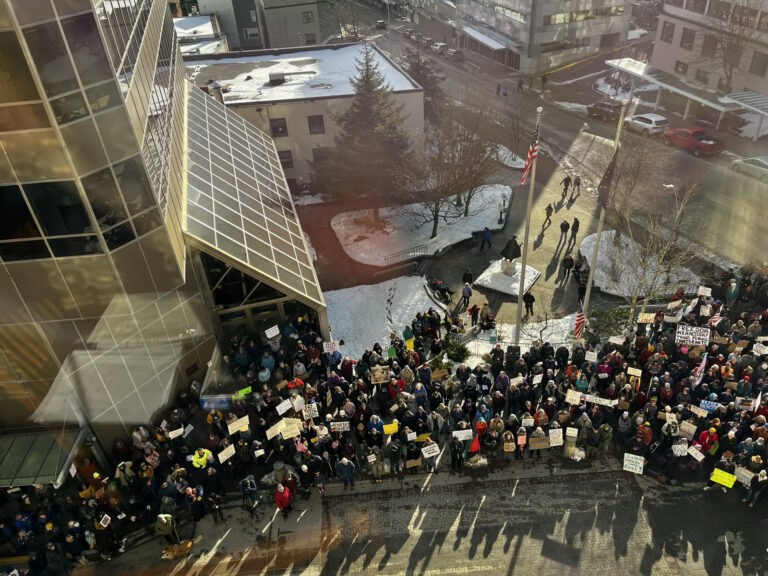By KASSIE ANDREWS
For decades, Alaska’s energy policy has been shaped not by the will of the people but by outside influence. It has been a long, forced march led by climate activists and their NGOs.
Back in 2010, the legislative intent of our energy policy quietly embedded renewable energy targets, laying the groundwork for today’s Renewable Portfolio Standard (RPS) push. Most Alaskans don’t realize that much of this policy wasn’t just influenced by NGOs. It was written for and by them.
The same activist networks that roamed the halls of Juneau back then never left. These groups continue to steer Alaska’s energy future toward their own agenda, co-opting our representative republic in the process. None of this is organic. It’s the result of calculated pressure from groups that have little concern for Alaskans, but plenty of appetite for power.
A Renewable Portfolio Standard is back in Alaska—for the third time. Gov. Mike Dunleavy backed the original version in 2022, and now Republicans are out of the majority.
Background
House Bill 153 was introduced by Rep. Ky Holland (I-Anchorage) on March 24, 2025. Per his presentation, “An RPS is a requirement on retail electric suppliers… to supply a minimum percentage or amount of their retail load… with eligible sources of renewable energy. HB 153 sets the following targets: 40 percent by 2030, 55 percent by 2035.”
The 2023 RPS was proposed at 25 percent by 2027, 55 percent by 2035, and 80 percent by 2040.
Currently, the Railbelt is only at 15 percent renewable, where this bill is explicitly targeted. Hydropower dominates the renewable total. Hydropower supplied ~90 percent of the renewable electricity statewide in 2023. According to the sponsor, 40 percent by 2030 from 15 percent today is “modest,” and 55 percent is a “realistic” cap.
Although the legislation allows for hydropower, activist backers of the bill have simultaneously called for the removal of the Eklutna Dam, which provides about 14 percent of the Railbelt’s total renewable share. With that, it becomes obvious what sources the co-ops will be forced to adopt: intermittent sources like wind and solar. Holland (then as a candidate) was provided with information on just how unreliable wind can be when Alaskans need it most. During the 2024 cold snap, wind at Fire Island fell to zero for a prolonged period, with the average at just 20.3 percent for the week—100 percent unreliable.
The legislation penalizes member-owned co-ops who fail to meet the targets with fines of $45/MWh shortfall, adjusted annually for inflation. The fine, as proposed in 2023, was $20/MWh, and while co-ops couldn’t technically recover it through rates, there was no realistic way for them to pay it otherwise. But this bill is completely different, and they don’t even try to hide it.
When asked by committee member Rep. George Rauscher about who pays the price, Shaina Kilcoyne, Holland’s staffer, admitted that “ultimately the ratepayer would pay.”
In a scenario of a larger scale operation such as a hospital—10,000-15,000 MWh/year, the fines at just a 20% shortfall would be more than $100k annually. For residential homes, it is in the hundreds, and it only escalates for both as the push to electrify everything—heat pumps, EVs, public transit, industrial process heat—accelerates. This does not include the intermittency factor or the higher cost of renewables themselves that the co-ops will undoubtedly need to increase your base rates to account for.
The incentives in this bill include a pseudo carbon tax of Renewable Energy Credits where co-ops can buy credits instead of building renewable projects, a wind energy bonus multiplier of 1.25x for large wind and a fine reinvestment option to force renewable projects. This is a mandated energy transformation with sharp, big sticks aimed directly at ratepayers’ wallets. It locks Alaskans into unreliable and politically favored renewables, whether the market (or the people) like it or not.
Activists, Operatives, and Dark Money Behind the RPS Push
The credit for the RPS legislation this round goes to Kilcoyne, who presented the sectional analysis to the House Energy Committee on April 1, 2024. Kilcoyne co-led the implementation of the Anchorage Climate Action Plan under Mayor Ethan Berkowitz. She is listed as the Energy Transition Program Director for the Alaska Venture Fund. Alaska Venture Fund is a project of the New Venture Fund, the flagship nonprofit of the many organizations managed by Arabella Advisors. The Alaska project received $10 million in 2021 from the Bezos Earth Fund to Advance former President Joe Biden’s unconstitutional Justice40 in Alaska.
No surprise, the same old cheerleaders for past RPS bills were invited by the committee for testimony. This included a blogger who is on the board of REAP and the Chief Energy Officer from Hawaii, plus one new recruit: Alaska Public Interest Research Group, AKPIRG. AKPIRG claims to be Alaska’s only non-governmental, nonpartisan consumer advocacy group- yet they testified in support of the RPS. Hard to imagine a bigger hypocrisy: backing a policy that punishes ratepayers and consumers. The claim of nonpartisanship made during testimony, as well as in the written presentation, is especially interesting.
The presenter, Energy Lead Natalie Kiley-Bergen, is a registered Democrat. Their website dons a land acknowledgment and states that they use the Jemez Principles for Democratic Organizing, used exclusively by anti-capitalist radical environmental justice groups that promote fossil fuel bans.
According to their 2024 report, this proudly “nonpartisan” group celebrated a four-month sabbatical for their executive director and locked in a permanent four-day workweek, complete with a paid wellness day every single week. Apparently, dismantling the economy is exhausting work, even for the nonpartisan crowd. Proudly displayed in their 2024 annual report is the list of donors, the typical blend of left-wing policy, climate, and electoral influence networks. The climate and energy transition funders include the 11th Hour Project, Hopewell Fund and Tortuga Foundation. The Hopewell Fund is also part of the Arabella Advisors network.
Grand Deception
For years, Alaska’s RPS was pushed by activists and policymakers as a solution to climate change. But as skepticism has grown—especially during the Trump administration, which is now actively pulling the rug out from under the climate agenda and slashing Green New Deal funding—the same players have simply shifted tactics. With the climate narrative losing traction in Alaska, they’re now repackaging the RPS as a response to dwindling Cook Inlet gas reserves and the supposed threat of expensive gas imports. It’s the same mandate, just a new fear campaign, swapping the “climate crisis” for a “gas crisis” to force through costly, unreliable energy policies.
A gas shortage needs a gas solution, not a mandate that drives up costs and risks grid stability. We need resilient, affordable power, not policy-driven by far-left climate NGOs.
This is the trap of an “all of the above” energy approach. Dunleavy has repeated this mantra multiple times. This approach is an excuse for doing a little bit of everything and none of it well. Enormous amounts of state resources and effort were poured into Energy Security Task Forces and Sustainable Energy Conferences. There was even a technical committee stood up by former Anchorage Mayor Dave Bronson to advise the Southcentral Alaska Mayors on the gas crisis. A report on their investigations has yet to be issued. The net result for Alaska is centralized planning, green banks, carbon capture and RPS mandates designed to force wind and solar onto the grid.
Alaska needs leadership that stops hiding behind “all of the above” and moves to all of the sensible instead. Last September, I suggested an RPS to Holland when he was running for office, a Reliable Portfolio Standard. But here he is now, pushing the complete opposite—backing a policy that guarantees unreliability and skyrocketing costs. Alaska deserves power that works, not politics that don’t.
Public testimony on HB 153 is scheduled for April 10th at 1:00 PM in House Energy. Show up. Speak out. Written testimony can be emailed to [email protected]
Kassie Andrews is an energy expert on Alaskan politics and resource development. A lifelong Alaskan, her career in energy has involved project management, construction, and finance.








